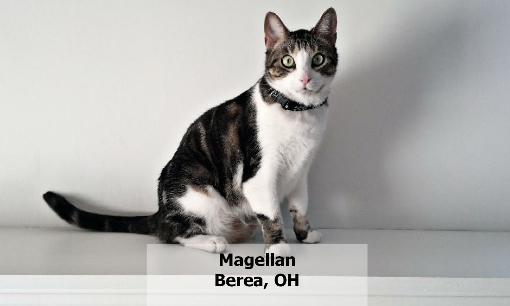The law should be the law, but unfortunately with pet food the FDA picks and chooses which laws they will enforce. FDA allows the pet food industry to violate serious food safety laws openly accepting inferior quality of ingredients in pet foods, but the agency recalls when a pet food contains risky bacteria. Why can’t we have both? Safe, quality pet food ingredients and risky bacteria free pet food.
The FDA considers Salmonella an adulterant in any pet food. From FDA Compliance Policy “Salmonella in Food for Animals” the agency states “FDA considers a pet food to be adulterated under section 402(a)(1) of the FD&C Act (21 U.S.C. 342(a)(1)) when it is contaminated with Salmonella…”
Notice in the above, FDA quotes laws of the FD&C Act (Food, Drug, and Cosmetic Act) in reference to Salmonella being considered an adulterant in animal food. But – to the contrary of the FD&C Act – in other Compliance Policies, the FDA allows pet food to violate the very same section of law (section 402(a)). In Compliance Policy “Canned Pet Food” the FDA states “Pet food consisting of material from diseased animals or animals which have died otherwise than by slaughter, which is in violation of 402(a)(5), will not ordinarily be actionable if it is not otherwise in violation of the law. It will be considered fit for animal consumption.”
Four sentences later – from section 402(a)(1) (risky bacteria – enforced) to section 402(a)(5) (diseased meat – not enforced) – the FDA chooses to ignore the law. More than ignores. In this Compliance Policy the agency openly tells pet food manufacturers that pet food made with diseased animals or animals that have died other than by slaughter is acceptable in pet food. Acceptable, that is, if it doesn’t contain dangerous bacteria.
Here’s what this boils down to…

And…

And…

Combined, all of the above means…

Federal law (the FD&C Act) clearly states that no food (human or animal) can contain dangerous bacteria. The very same laws clearly state that no food (human or animal) can contain meat from diseased animals or meat from animals that have died other than by slaughter.


Why does FDA only enforce the FD&C Act with risky bacteria?

You and I are required to abide by law, how is it that FDA allows pet food to violate law?

Food safety laws should never be ignored. Especially ignored by the federal agency whose sole purpose is to enforce the law in order to protect the public and our pets.
And by the way, each and every U.S. state’s laws governing pet food ignore the FD&C Act too. Any state could choose to abide by the law, but instead, each state allows the pet food industry to violate law with no disclosure to the consumer.
Bacteria and inferior ingredients are a violation of law – and just plain wrong.
For more information on what the FDA allows into pet food, read…
FDA Compliance Policy Rendered Animal Feed Ingredients
FDA Compliance Policy Canned Pet Food
FDA Compliance Policy Diversion of Contaminated Food for Animal Use
FDA Compliance Policy Diversion of Adulterated Food for Animal Use
Click Here for a graphic explaining the above (easy to share on social media).
And if you haven’t signed the petition asking FDA to tell consumers if their pet food contains rotten meat, Click Here. All signatures will be hand delivered to FDA in early August during the AAFCO meetings.
To protect your pet from consuming rotten meat pet food, ask the manufacturer if ingredients are human edible. Human edible ingredients are the ONLY assurance consumers have right now (with existing pet food regulations).
Wishing you and your pet(s) the best,
Susan Thixton
Pet Food Safety Advocate
Author Buyer Beware, Co-Author Dinner PAWsible
TruthaboutPetFood.com
Association for Truth in Pet Food
What’s in Your Pet’s Food?
Is your dog or cat eating risk ingredients? Chinese imports? Petsumer Report tells the ‘rest of the story’ on over 3000 cat foods, dog foods, and pet treats. 30 Day Satisfaction Guarantee. www.PetsumerReport.com

The 2015 List
Susan’s List of trusted pet foods. Click Here
Have you read Buyer Beware? Click Here
Cooking for pets made easy, Dinner PAWsible
Find Healthy Pet Foods in Your Area Click Here


































Teresa Reid
July 21, 2015 at 6:58 pm
Thank you so much for this important information.
Peg
July 21, 2015 at 8:31 pm
Susan, thank you for this.
I sent it to my vet and she is horrified.
She also sent it to all her vet friends. The vets are listening to you Susan and not relying on the phony PFI for boatloads of false info.
Woo hoo
Susan, is it okay to print out your graphic?
I have a new local indy store that would probably display the graphic.
I am sure it will be hanging in my vet’s office if it’s okay to print.
Thank you again for all you do.
Susan Thixton
July 21, 2015 at 9:10 pm
Yes Peg – everything is to be shared. Thank you!
Mollie Morrissette
July 23, 2015 at 8:05 pm
Susan, you HAVE to take this graphic to AAFCO – it’s brilliant. Graphic and to the point.
Anthony Hepton
August 4, 2015 at 8:54 pm
While the FDA recognizes that killing bacteria is important, and the thermal processes in rendering plants and the kibble extrusion processes accomplish the thermal destruction of harmful bacteria, the endotoxins that are an integral part of the surface of gram negative bacteria remain unaffected by the temperatures of these processes.
USDA has recognized that endotoxins are present in the end products of rendering and are well aware that the pet food manufacturers do not test for endotoxins, so how do the manufactures, or we, know that the products are not dangerously contaminated. There is ample scientific evidence to show that when high levels of endotoxins are consumed in a high fat diet that endotoxemia results, the symptoms are identical to so many illnesses and deaths that have been reported.